Table of contents
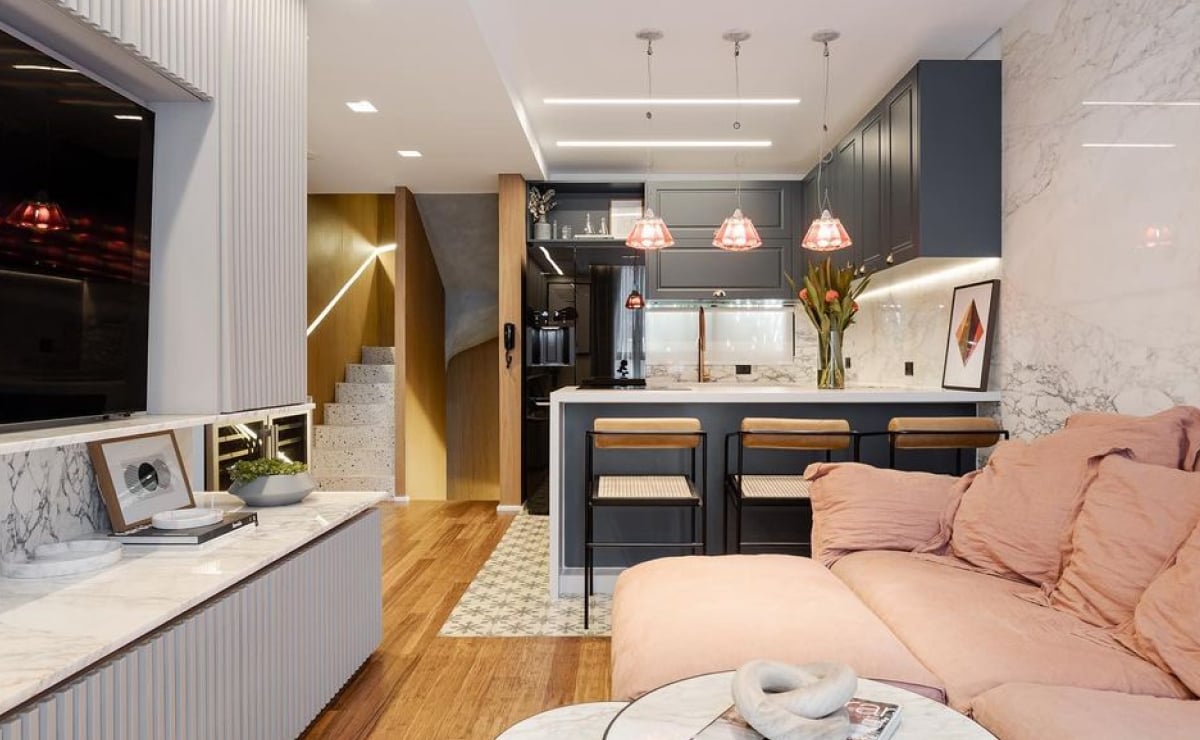
A well-lit environment makes all the difference. Having good lighting is the perfect strategy to highlight or hide small details in the decoration.
Nowadays the most varied types of lamps are available, produced with different materials and models, and knowing how to use them is essential for the environment to become even more charming.
For these reasons, calculating the number of lamps needed in a room becomes an important step when decorating the home.
Why it is important to calculate the number of lamps in a room
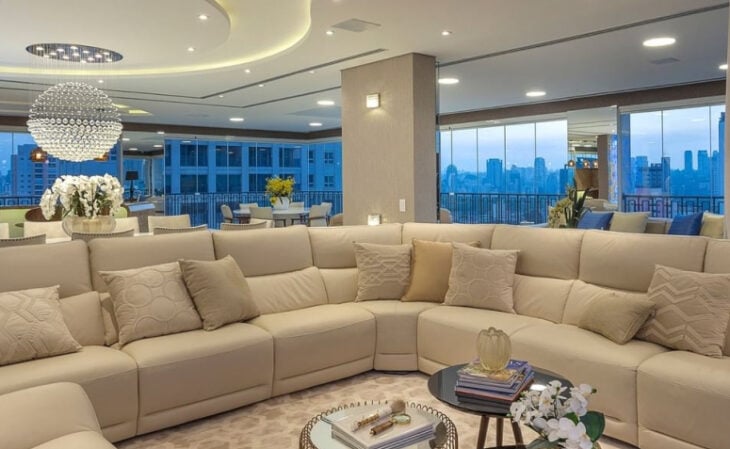
As Mariana Lorenzato, lightining designer at Simply Led reveals, besides its common goal of bringing light into the space, lighting is still responsible for reproducing an adequate brightness in the environment, highlighting decorative objects, works of art, and enhancing the environment's finishing, such as floors and wallpaper for example.
"For example, a TV room needs less light than a kitchen," he explains. Therefore, performing the correct calculation is indispensable when trying to meet the particular needs of each space.
Regarding the choice of lamps for each environment, Mariana teaches that when the lamp is adequate for each environment, it brings as a result the total functionality of the space according to its needs: "Lamps have different angles and color temperatures, precisely to bring the proper application for each item that one seeks to illuminate", she instructs.
How to calculate the illuminance for rooms
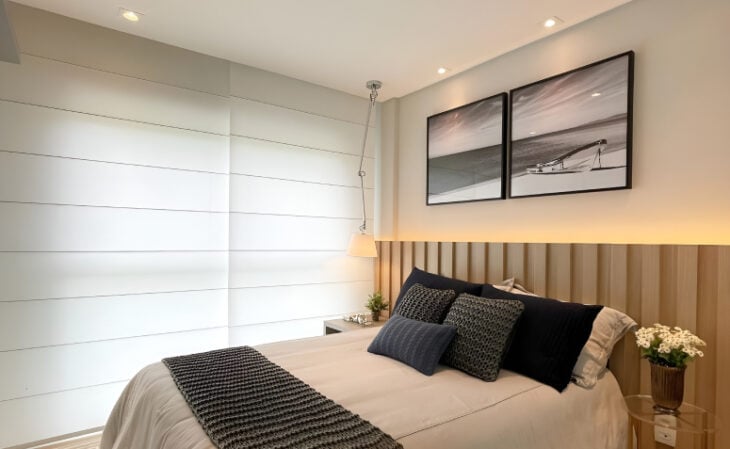
A fundamental concept for defining the most appropriate amount of light for each environment and situation. It can be measured by lux and lumen, where lux is the amount of light per square meter and lumen is the intensity of light.
"Lux is the amount of luminous flux per square meter. Its calculation is done by the amount of luminous flux of a lamp (lumen) divided by the square meter of space", informs the professional.
See_also: 60 open concept kitchen ideas to integrate your home with lots of styleCheck out the minimum recommended illuminance for some of the most used rooms in the house:
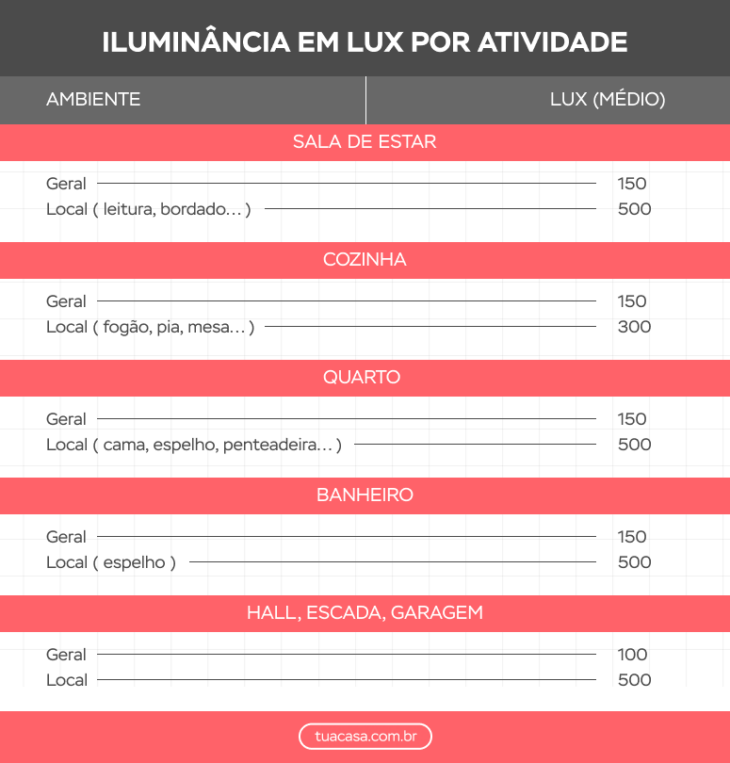
For the ideal illuminance of internal environments, there is NBR 5413, a norm from ABNT (National Agency of Norms and Techniques), which determines the ideal illuminance level for each environment, according to the activities to be performed in that space. Therefore, although the lamp calculation and the lux formula helps when planning the quantity for a certain environment, it is necessary to followthese standards.
So, let's go to the formula
Now that you have seen the average recommended lux for each room, we will show you the formula and examples to learn how to calculate at home. The formula to calculate the required lumen, i.e. which lamp to buy: mean lux x room area .
- Example 1: suppose the overall area of the room is 8m², then we need to calculate: 8×150 = 1200 lumen.
- Example 2: Let's assume that the local area of the kitchen, specifically the table, is 1.5m². So the bill will be 1.5×300 = 450 lumen.
Okay, now that you have figured out the lumen value, all you have to do is follow the table below to find out which lamp meets your needs.
See_also: Learn how to cool the room and relieve the heat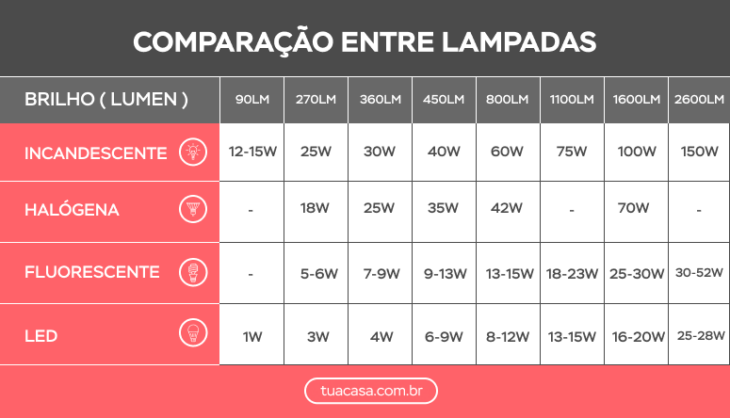
Let's go back to the two previous examples. In case 1, the total lumen was 1200. In this situation, we can buy three 450 lumen lamps, which is equivalent to 6 to 9W in LEDs or 35W in halogens.
In case 2, the moderator can buy a 40W incandescent bulb or a 35W halogen bulb or a 9-13W CFL or a 6-9W bulb, all depending on the type of bulb the person decides to have at home.
Factors that interfere with the lighting required for an environment
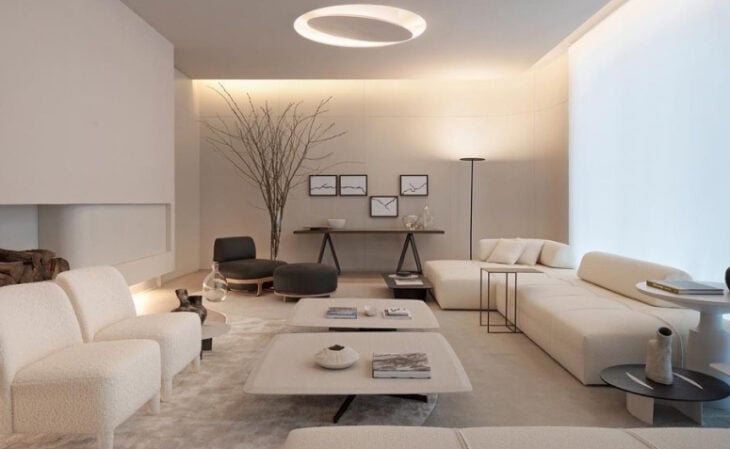
For Mariana, the luminotechnical project must be part of the engineering process already in the first stages of construction, with the purpose of obtaining the best result: "Ceiling recesses for the installation of lighting must be calculated and designed according to the depth of each spot with the lamp", she reveals.
If the project is carried out in a renovation, for example, it may be necessary to adapt the positioning or even the number of lamps used to guarantee a satisfactory result.
How to choose the right type of lamp

There are many different types of lamps on the market: incandescent, halogen, fluorescent, and LED lamps.
Incandescent bulbs are the oldest and best known, and are widely used for general lighting, lampshades, and even inside refrigerators or stoves. Halogen bulbs are widely used in spots, to highlight specific objects or areas, since they have a high control of their beam of light.
Fluorescent lamps are currently replacing incandescent lamps, due to their low energy consumption and high efficiency. They are used in general lighting and as decorative or effect lighting.
LED lamps, on the other hand, are considered the most modern, because they convert electrical energy directly from light energy. They can be used in spots, directing their beam of light, or even in facade lighting.
Regardless of the type of lamp chosen, good lighting can bring an air of sophistication and highlight certain decorative features, making the environment more beautiful and functional.


